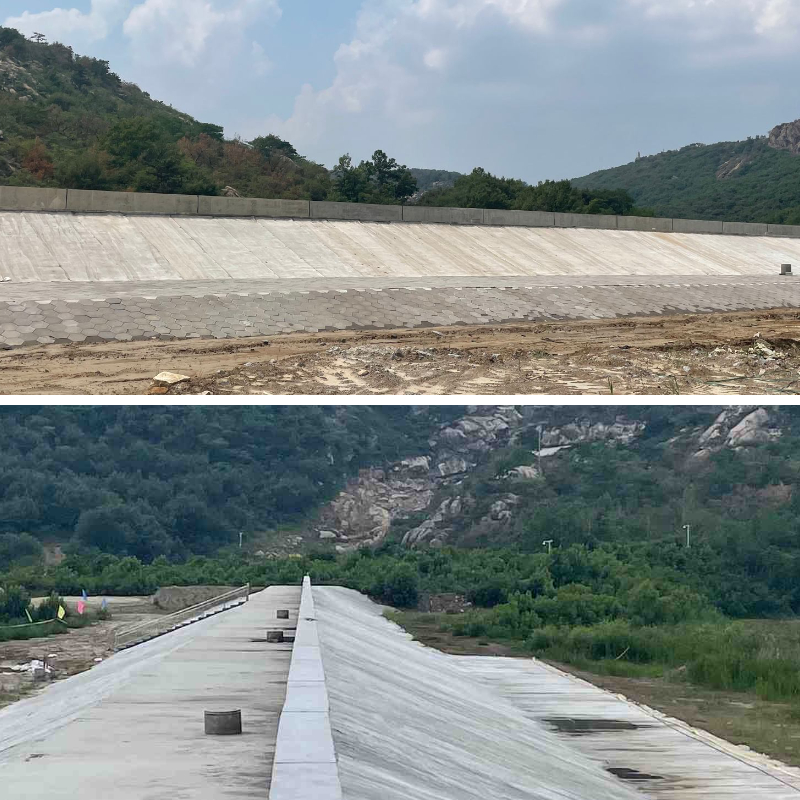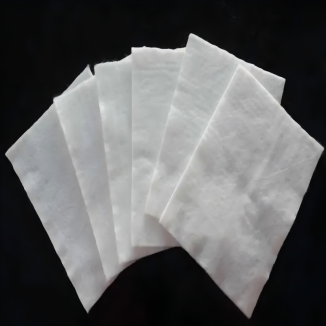How to Choose the Right Cement Blanket for Your Project: A Complete Buying Guide
Cement blanket (also regarded as concrete cloth) has revolutionized construction, civil engineering, and emergency restore tasks with its flexibility, durability, and ease of use. This revolutionary cloth combines the energy of concrete with the portability of a fabric, making it best for slopes, drainage systems, maintaining walls, and transient structures. Choosing the incorrect cement blanket can lead to structural weaknesses, mission delays, or wasted costs—so it’s crucial to pick a product that aligns with your project’s special needs. This information breaks down 4 key areas to assist you select the ideal concrete cloth, making sure reliability and long-lasting results.
1. What Is a Cement Blanket (Concrete Cloth) and Why It Matters
A cement blanket is a flexible, fiber-reinforced cloth infused with dry concrete mix, designed to harden when activated via water. Unlike typical concrete, which requires mixing, pouring, and curing equipment, concrete material arrives prepared to use—simply unroll it, impenetrable it in place, and add water to create a solid, long lasting surface. This graph eliminates the want for heavy machinery, reduces labor costs, and speeds up mission timelines, making it a game-changer for faraway web sites or time-sensitive jobs. The core benefit of cement blanket lies in its versatility: it conforms to irregular surfaces, resists erosion and water damage, and continues structural integrity in harsh conditions. Whether you’re stabilizing a hillside, lining a drainage ditch, or repairing a broken roadway, concrete material supplies regular overall performance that normal substances conflict to match. Every task relying on sturdiness and efficiency can advantage from a extremely good cement blanket—making knowledgeable resolution a crucial first step.
2. Key Types of Cement Blanket: Which Suits Your Project?
Cement blanket comes in a number of specialised types, every engineered to meet precise assignment demands. Understanding the variations between these picks ensures you don’t make investments in a concrete fabric that can’t face up to your project’s stipulations or load requirements.
2.1 Standard Cement Blanket
Standard cement blanket is the most broadly used type, presenting a balanced combination of fiber reinforcement and concrete combine for general-purpose applications. It’s light-weight (typically 15–20 kg/m²) and flexible, making it handy to cope with and installation on slopes, flat surfaces, or curved structures. This concrete fabric is best for residential landscaping projects, small drainage systems, erosion manage on mild slopes, and transient building barriers. It treatment plans inside 24–48 hours and presents average tensile strength, appropriate for low to medium load-bearing needs. Standard cement blanket is least expensive and versatile, making it a go-to preference for initiatives except excessive environmental or structural demands.
2.2 High-Strength Cement Blanket
High-strength cement blanket is bolstered with greater fibers (often glass or polyester) and a denser concrete mix, handing over choicest load-bearing potential and resistance to have an effect on or abrasion. This concrete fabric is designed for heavy-duty purposes like toll road embankments, industrial protecting walls, bridge abutments, and industrial building projects. It normally weighs 25–35 kg/m² and treatments to a compressive power of 30–40 MPa—comparable to standard poured concrete. High-strength cement blanket is additionally resistant to chemical publicity and excessive temperatures, making it appropriate for industrial web sites or coastal areas with saltwater exposure. If your mission requires long-term structural balance or heavy load support, this kind of cement blanket is the highest quality choice.
2.3 Rapid-Curing Cement Blanket
Rapid-curing cement blanket is formulated to harden in as little as 4–8 hours after water activation, making it ideal for emergency repairs or time-sensitive projects. This concrete fabric is frequently used for flood control, avenue pothole repairs, damaged pipe lining, and catastrophe restoration efforts the place rapid stabilization is critical. It keeps flexibility at some point of set up however units swiftly to structure a inflexible barrier, stopping in addition injury or erosion. While it treatments quicker than preferred cement blanket, it nonetheless provides dependable power and durability—making it a treasured alternative for initiatives the place downtime have to be minimized. Rapid-curing concrete material is also resistant to water runoff at some stage in curing, making sure constant overall performance even in moist conditions.
3. Critical Factors to Consider When Choosing Cement Blanket
Selecting the proper cement blanket requires evaluating your project’s precise needs, environmental conditions, and long-term goals. Below are the most necessary elements to information your decision.
3.1 Project Purpose and Load Requirements
Start by way of defining the core characteristic of the cement blanket: are you the usage of it for erosion control, structural reinforcement, drainage lining, or emergency repair? Each reason needs unique properties—for example, erosion manipulate on a steep slope requires a bendy concrete fabric with exact adhesion, whilst a holding wall desires high-strength cement blanket with most beneficial compressive strength. Additionally, reflect onconsideration on the load the concrete fabric will bear: pedestrian traffic, heavy machinery, or soil stress will dictate the required tensile and compressive strength. Be practical about your project’s demands—overlooking load necessities can lead to untimely cracking or failure, whilst overinvesting in a high-strength cement blanket for a low-load task wastes money.
3.2 Environmental Conditions
The surroundings the place the cement blanket is hooked up without delay influences its overall performance and lifespan. Consider temperature fluctuations: concrete fabric hooked up in freezing climates wishes freeze-thaw resistance to keep away from cracking, whilst these in hot, arid areas require UV stabilization to stop degradation. Moisture degrees are additionally critical—if the assignment is in a moist region (e.g., wetlands, coastal zones), pick a cement blanket resistant to mold, mildew, and water damage. Chemical publicity is every other factor: industrial web sites or areas with acidic soil may also want a concrete material with chemical resistance to keep away from deterioration. Finally, reflect onconsideration on publicity to daylight and weather—outdoor tasks require cement blanket with UV safety to preserve electricity over time.
3.3 Material Specifications
Pay shut interest to the technical specs of cement blanket, as they at once correlate to performance. Thickness (typically 5–15 mm) shows durability—thicker concrete material presents higher safety in opposition to have an effect on and abrasion. Weight (measured in kg/m²) impacts managing and installation: lighter cement blanket is less difficult to transport and unroll, whilst heavier choices grant greater strength. Curing time is imperative for undertaking timelines—standard picks treatment in 24–48 hours, whilst rapid-curing concrete fabric units in hours. Compressive energy (measured in MPa) shows how a great deal stress the cement blanket can withstand—aim for at least 20 MPa for commonplace use and 30+ MPa for structural applications. Always assessment producer statistics sheets to make certain the concrete fabric meets enterprise requirements (e.g., ASTM, EN) and your project’s requirements.
3.4 Installation and Compatibility
Cement blanket’s ease of set up is a essential advantage, however no longer all picks are well suited with each and every project’s setup. Consider the dimension and form of the area: slim areas or irregular surfaces require a bendy concrete material that can be reduce to dimension except compromising strength. Check if the cement blanket requires extra anchoring (e.g., stakes, screws) to continue to be in place—steep slopes or high-wind areas may also want more securing. Also, make sure the concrete material is well suited with different substances used in your project, such as soil, gravel, or current concrete. Finally, think about set up time and labor: if you have a small group or tight deadline, choose for a lightweight, easy-to-handle cement blanket that doesn’t require specialised equipment.
4. Common Mistakes to Avoid When Buying Cement Blanket
Even skilled contractors make errors when choosing cement blanket. Here are the most well-known pitfalls to steer clear of.
4.1 Choosing the Wrong Type for the Project
Using a wellknown cement blanket for a high-load structural assignment or a rapid-curing concrete fabric for a long-term landscaping job will lead to disappointment. Always in shape the cement blanket kind to your project’s purpose—don’t prioritize fee over functionality. For example, a rapid-curing concrete fabric can also be convenient, however it may also no longer provide the identical long-term sturdiness as a trendy or high-strength cement blanket for everlasting structures.
4.2 Ignoring Technical Specifications
Don’t count on all cement blanket is the same—skipping specs like compressive strength, thickness, or curing time can lead to failure. A concrete material with low compressive electricity used for a preserving wall will crack below soil pressure, whilst a skinny cement blanket established in a high-traffic vicinity will put on quickly. Always confirm technical important points with the producer and make sure they align with your project’s needs.
4.3 Underestimating Environmental Impact
Failing to account for environmental prerequisites is a frequent mistake. A cement blanket except UV stabilization will degrade in direct sunlight, whilst one except freeze-thaw resistance will crack in bloodless climates. Even minor environmental elements (e.g., excessive humidity, acidic soil) can decrease the lifespan of concrete cloth—take the time to investigate the undertaking website online and pick out a cement blanket designed for these conditions.
4.4 Overlooking Installation Requirements
Cement blanket is handy to install, however wrong setup can compromise its performance. Forgetting to invulnerable the concrete material exact on slopes can lead to transferring at some stage in curing, whilst inadequate water activation can end result in uneven hardening. Always observe the manufacturer’s set up guidelines—including overlap requirements, anchoring methods, and water application—to make certain the cement blanket performs as intended.
Conclusion
Choosing the proper cement blanket (concrete cloth) is a crucial step in making sure your project’s success, durability, and cost-effectiveness. By grasp the distinct sorts of cement blanket, evaluating your project’s motive and load requirements, thinking about environmental conditions, and keeping off frequent mistakes, you can pick out a product that meets your needs. Whether you want a fashionable concrete material for landscaping, a high-strength alternative for structural support, or a rapid-curing cement blanket for emergencies, prioritizing compatibility and best will supply long-lasting results.
Contact Us
Company Name: Shandong Chuangwei New Materials Co., LTD
Contact Person :Jaden Sylvan
Contact Number :+86 19305485668
WhatsApp:+86 19305485668
Enterprise Email: cggeosynthetics@gmail.com
Enterprise Address: Entrepreneurship Park, Dayue District, Tai 'an City,
Shandong Province









